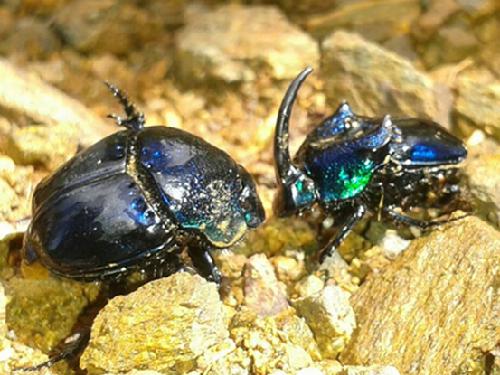Alfonsina Arriaga Jiménez
Other projects
The aim of the project is to identify the dung beetles species at risk in order to be able to protect them. Using those species as bioindicators and as a tool to implement conservation measures in the mountains. Helping the communities to use our information in their benefit, using them as charismatic species in the ecotourism projects, and using them as bio-indicators to identify the places to start a restoration process. Education and training of people will be done in each community, to get a better knowledge of their environment and teach them about the importance of coprophagous beetles.

Phanaeus from Sierra Norte, Oaxaca, México.
High mountains of Oaxaca are interesting places to study, due to its geographic isolation, history and limited surface. Since last year that the project started, we have found at least 3 new species for science (in description process). Which together with the endemic species already identified from these sites, makes the study of these organisms important. The serious threats that exist in the mountains (habitat modification, deforestation, climatic changes, etc.) along with the little knowledge of the entomofauna, put in risk their conservation. This study is providing an entomofauna list of dung beetles, with which we aimed to evaluate the diversity and conservation status of these groups in the sampled mountains.
The fieldwork will continue (summer 2018) in the mountainous regions of the Sierra Sur of Oaxaca, while in the communities of the Sierra Norte (were the sampling season was made this year) a series of workshops will be made, as well as an evaluation of the results. The sampling methodology that was followed in the other mountains, will be used next year too, in addition with punctual samplings. Regarding sampling methods, fall traps baited with dung and mushrooms will be used, and then all the material will be identified.
The chosen sites are mountains that have natural vegetation within our chosen altitudes. The vegetation types found in these places include are cloud forest, pine-oak forest, pine forest and O. mexicana forests. All of them are habitats with a high number of endemic species, which are severely threatened by human activity.
The aim of the project is to identify the dung beetle’s species at risk to be able to protect them. We also aimed to include the endemic species into the NOM059-Semarnat2010 list (list with the endangered species in Mexico, with only three arthropods to date). We aimed that our results will help the decision makers on each community to have enough information to take informed decisions about the conservation measurements in each place.